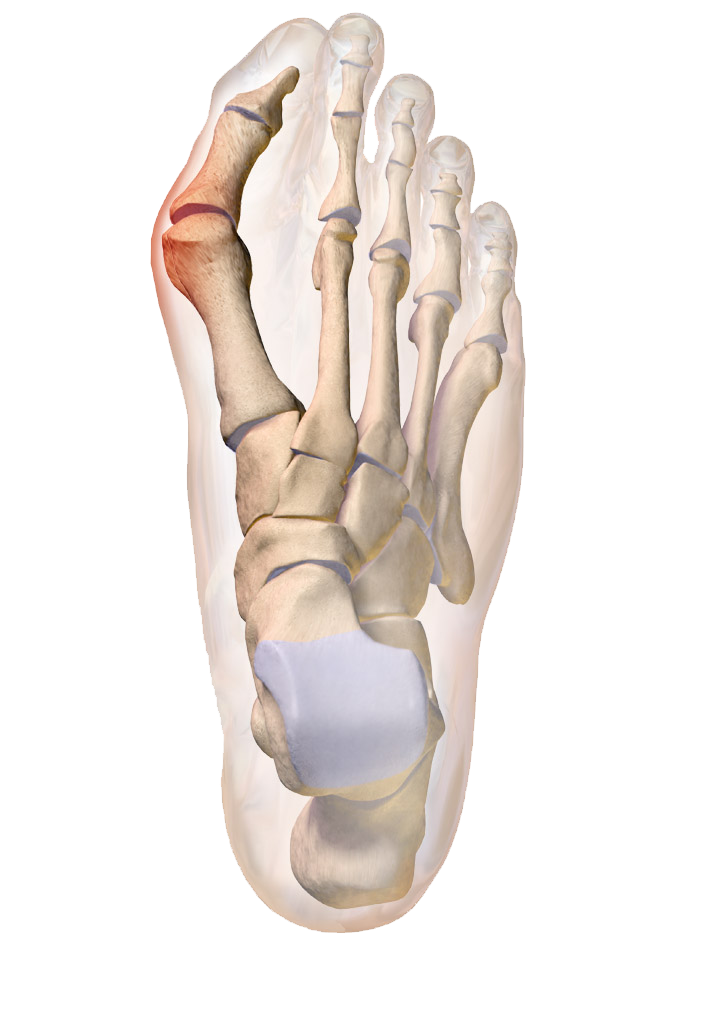
Affiliated Foot Care Center
Call 860•349•8500 or 203•294•4977

Bunions occur when pressure is applied to the side of the big toe (hallux) forcing it inwards towards, and sometimes under or over, the other toes (angulation). As pressure is applied, the tissues surrounding the joint may become swollen and tender. In a survey of people from cultures that do not wear shoes, no cases of bunions were found, lending credence to the hypothesis that bunions are caused by ill-fitting shoes.
The bump itself is partly due to the swollen bursal sac or an osseous (bony) anomaly on the metatarsophalangeal joint. The larger part of the bump is a normal part of the head of the first metatarsal bone that has tilted sideways to stick out at its top.
The term "hallux valgus" or "hallux abducto valgus" are the most commonly-used medical terms associated with a bunion deformity, where "hallux" refers to your great toe or your big toe, "valgus" refers to the abnormal angulation of your toe commonly associated with bunion deformities, and "abducto" refers to the abnormal drifting or inward leaning of your great toe towards the second toe, which is also commonly associated with bunion disorders.
Hallux Valgus is caused by a biomechanical abnormality, where certain tendons, ligaments, and supportive structures of the first metatarsal are no longer functioning correctly. This biomechanical abnormality may be caused by a variety of conditions intrinsic to the structure of your foot--such as flat feet, excessive ligamentous flexibility, abnormal bone structure, and certain neurological conditions.
This condition may be treated with changes in shoe gear, or we can prescribe orthotics. These sorts of treatments address symptoms more than they correct the actual deformity.
Corrective surgery may be necessary if discomfort you have is severe or when correction of the deformity is desirable for the continued health of your feet.
Dr. Fosdick will go over all of your options to make your feet feel better.